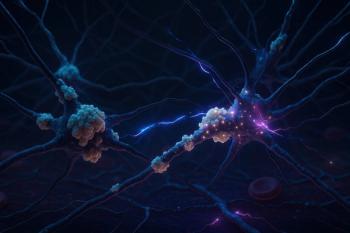
- Vol 34 No 1
- Volume 34
- Issue 1
Take Two Pills and ...
It's not about the specifics of preliminary studies about psilocybin. It's about the validation of research using psychedelic drugs in modern psychiatry.
Allan Tasman, MD | Editor in Chief
One pill makes you largerAnd one pill makes you smallAnd the ones that mother gives youDon’t do anything at all
White Rabbit, Grace Slick, circa 1966
Hold on, Alice, this may not be true.
Last month I wrote about the
The study of a wide range of potential medical/psychiatric uses of hallucinogens was, of course, inhibited because of the aftermath of widespread use of “mind-altering” agents starting with the counterculture movement in the 1960s. Timothy Leary-he of “Tune in, turn on, drop out” fame-and Richard Alpert, later known as Ram Dass, both Harvard professors, were fired in 1963 because of concerns about their LSD research. A year earlier, the FDA had listed LSD as an experimental drug and restricted research on it.
The FDA research restrictions were likely not only because of scientific concerns but also political and societal pressures. In the 1950s, hallucinogens were becoming drugs of choice for those interested in finding ways to improve self-awareness in addition to psychoanalysis. Aldous Huxley was one of the more prominent experimenters. His book, Doors of Perception, published in 1954, was an essay about his own experiences.1
LSD also had been the subject of substantial academic research in the 1950s, capped by the First International Conference on
The Second International Conference on LSD in 1965 focused on use of the drug in psychotherapy and alcoholism. That conference included such speakers as Daniel X. Freedman, who became Chair of Psychiatry at the University of Chicago a year later, and President of the American Psychiatric Association (APA) in 1981. Arnold Ludwig, another speaker, later won the APA’s research award for his work on LSD and alcoholism. I was fortunate to have him as my medical school advisor and mentor while he was Chair of Psychiatry at the University of Kentucky.
I mention these facts because hallucinogen research was seen as an important and appropriate field of inquiry in psychiatry during the 1950s and 1960s. But the US government banned possession of LSD in 1968 (the state of California had banned it in 1966) due to what was then an epidemic of hallucinogen use in the US. Having been in college in those days, I can assure those readers too young to remember that the level of concern and panic about the negative effects of hallucinogenic use, both in the medical and psychiatric community, as well as federal, state, and local governments, not to mention millions of parents, was palpable and cannot be overestimated. The national worry dwarfed the present-day focus on opiate addiction.
It was no surprise, then, that when the Comprehensive Drug Abuse Prevention and Control Act was passed in 1970, which defined an FDA scheduling system for drugs, that LSD, psilocybin, mescaline, peyote, cannabis, and MDA were placed in Schedule 1, placing severe restrictions on use.
Of course, unknown to the public until 1975, the CIA had been conducting research through their
There were many violations of human subject research guidelines during the MKUltra program, including subjects being given LSD without their knowledge. These violations were brought to light only in 1975 during Senator Frank Church’s hearing on the CIA following the uproar about Watergate. The MKUltra aftermath was undoubtedly a significant contributor to the decades-long dearth of psychiatric research on hallucinogens.
Given this history, recent events involving research initiatives on “taboo” drugs may be the opening into a new wave of research on Schedule 1 psychotomimetic drugs. I won’t focus too much attention on what has been happening in research on medical uses of marijuana, since that has been going on now for over 3 decades. Dronabinol, a cannabinoid, has been FDA approved for years to treat anorexia in AIDS and as an antiemetic in cancer chemotherapy. It is also used for migraine relief. More and more states are legalizing medical uses of marijuana, and a number of states have even legalized recreational use (although the federal illegality is unchanged).
Let me mention just 2 recent reports about research using psilocybin and ecstasy.
And you just had some kind of mushroomAnd your mind is moving low
White Rabbit
In a
An earlier
The approval of continuing research using these 2 previously banned psychedelics marks a significant change not only in the scientific environment, but also societally. This may be one more sign that the 1960s are really over. And, Grace Slick’s admonition in White Rabbit to “feed your head, feed your head” might be evolving to become scientifically sanctioned. But, for now, such “trips” will occur only in very well-controlled scientific research. It’s going to be extremely interesting to see where this body of work leads.
References:
1. Huxley A. The Doors of Perception and Heaven and Hell. New York: Harper Collins; 2009.
2. Erowid. LSD Timeline.
3. Wikipedia. Project MKUltra.
4. Hoffman J. A dose of a hallucinogen from a “magic mushroom,” and then lasting peace. New York Times. December 1, 2016.
5. Ross S, Bossis A, Guss J, et al. Rapid and sustained symptom reduction following psilocybin treatment for anxiety and depression in patients with life-threatening cancer: a randomized controlled trial. J Psychopharm. 2016;30:1165-1180.
6. Griffiths RR, Johnson MW, Carducci MA, et al. Psilocybin produces substantial and sustained decreases in depression and anxiety in patients with life-threatening cancer: a randomized double-blind trial. J Psychopharm. 2016;30:1181-1197.
7. Phillips D. FDA agrees to new trials for ecstasy as relief for PTSD patients. New York Times. November 29, 2016.
Articles in this issue
almost 9 years ago
Introduction: Cognition, Rarely Discussedalmost 9 years ago
Lithium Therapy, Bipolar Disorder- and Neurocognitionalmost 9 years ago
To Google or Not to Google? Is “Patient-Targeted” Googling Ethical?almost 9 years ago
Opioid Analgesics: The Myths-and the Factsalmost 9 years ago
Medical Marijuana and Dementia-Associated Agitation: Stirring the Potalmost 9 years ago
Eight Enemies of Good Writing for the Lay Readeralmost 9 years ago
A Coin Flipalmost 9 years ago
Committed: The Battle Over Involuntary Psychiatric Carealmost 9 years ago
An Update on MelancholiaNewsletter
Receive trusted psychiatric news, expert analysis, and clinical insights — subscribe today to support your practice and your patients.














